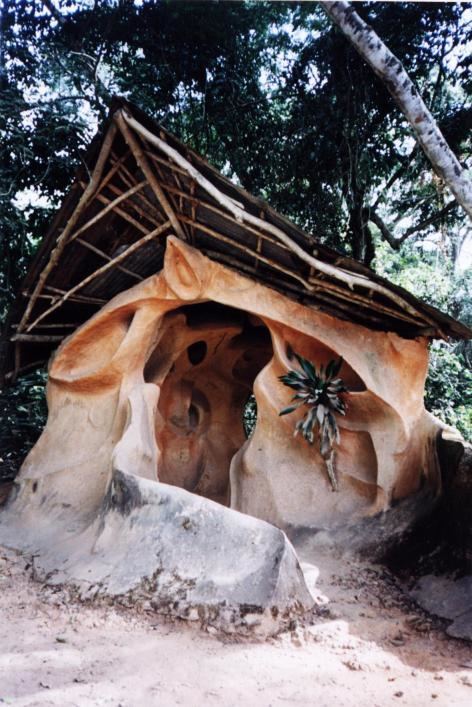Criteria ii, iii, vi UNESCO region Africa UNESCO World Heritage Site inscription 2005 | Type Cultural Reference 1118 | |
 | ||
Similar Erin‑Ijesha Waterfalls, Idanre Hill, Olumo Rock, Yankari National Park, Ikogosi Warm Springs | ||
Osun-Osogbo or Osun-Osogbo Sacred Grove is a sacred forest along the banks of the Osun river just outside the city of Osogbo, Osun State, Nigeria.
The Osun-Osogbo Grove is among the last of the sacred forests which usually adjoined the edges of most Yoruba cities before extensive urbanization. In recognition of its global significance and its cultural value, the Sacred Grove was inscribed as a UNESCO World Heritage Site in 2005.
The 1950s saw the desecration of the Osun-Osogbo Grove: shrines were neglected, priests abandoned the grove as customary responsibilities and sanctions weakened. Prohibited actions like fishing, hunting and felling of trees in the grove took place until Austrian, Susanne Wenger, came and stopped the abuse going on in the grove.
With the encouragement of the Ataoja and the support of the local people, "Wenger formed the New Sacred Art movement to challenge land speculators, repel poachers, protect shrines and begin the long process of bringing the sacred place back to life by establishing it, again, at the sacred heart of Osogbo."
Osun-Osogbo Festival
Every year, the Osun-Osgogbo festival is celebrated in the month of August at the grove. Yearly, the festival attracts thousands of Osun worshippers, spectators and tourists from all walks of life.
For the people of Osogbo Land, August is a month of celebration, traditional cleansing of the city and cultural reunion of the people with their ancestors and founders of the Osogbo Kingdom.
The Osun-Osogbo Festival is a two-week-long programme. It starts with the traditional cleansing of the town called 'Iwopopo', which is followed in three days by the lighting of the 500-year-old sixteen-point lamp called 'Ina Olojumerindinlogun'.
Then comes the 'Ibroriade', an assemblage of the crowns of the past ruler, Ataojas of Osogbo, for blessings. This event is led by the sitting Ataoja of Osogbo and the Arugba, Yeye Osun and a committee of priestesses.
